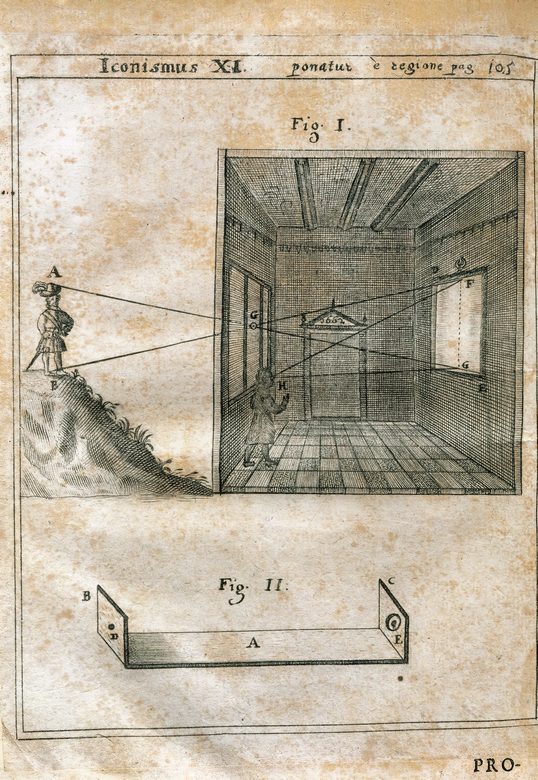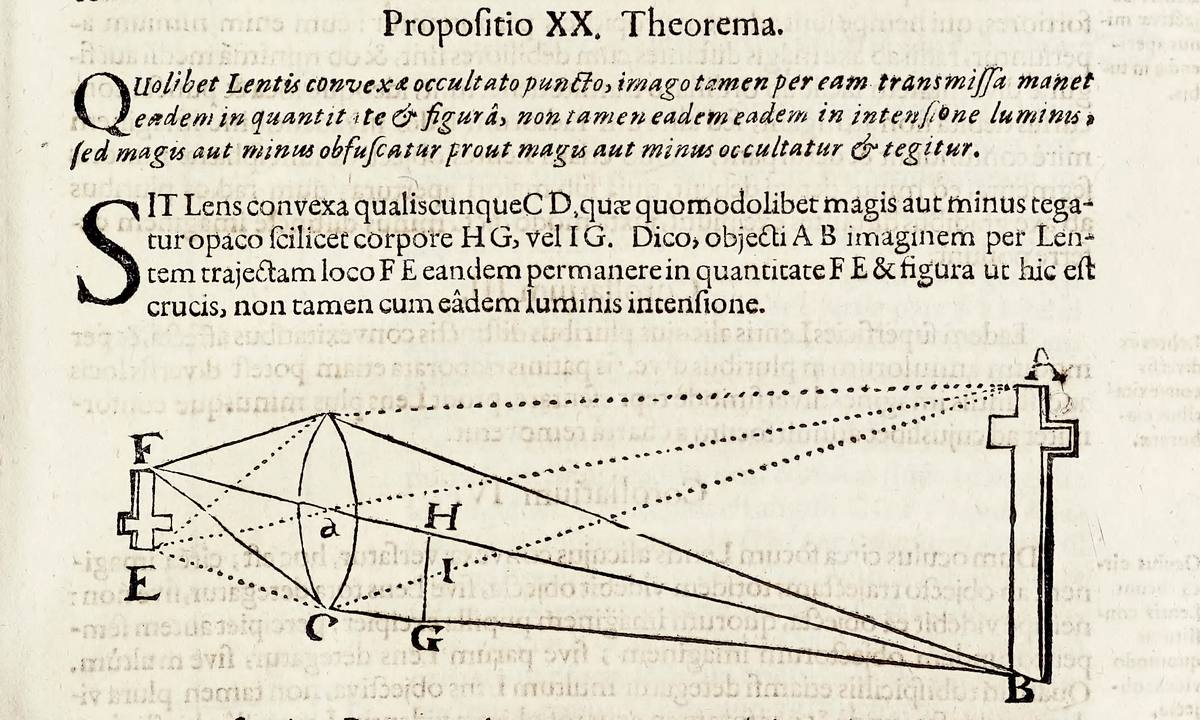
The Camera Obscura timeline from the beginnings
Studies and discovery of optical realities and devices goes very much back in time. From as early as 500 years Before Christ scientists, philosophers and painters knew about the principles that would lead to the actual recording of an image 2,300 years later.
300-500 BC | Chinese and Greek philosophers describe the basic principles of optics and the camera. |
470-391 BC |
The first surviving mention of the principles behind the pinhole camera, a precursor to the camera obscura, belongs to Mo Ti, a Chinese philosopher. Mo Ti referred to this camera as a "collecting plate" or "locked treasure room". |
384-322 BC |
Greek philosopher Aristotle understands the optical principle of the pinhole camera. He views the crescent shape of a partially eclipsed sun projected on the ground through the holes in a sieve, and the gaps between leaves of a plane tree and notes: "sunlight travelling through small openings between the leaves of a tree, the holes of a sieve, the openings wickerwork, and even interlaced fingers will create circular patches of light on the ground." |
ca. 300 BC |
The Greek mathematician Euclid of Alexandria's "Optics", presupposes the camera obscura as a demonstration that light travels in straight lines. |
ca. 600 AD |
The greek architect Anthemius of Tralles (474-558 AD) uses a type of Camera Obscura in his experiments. |
1508 |
Leonardo da Vinci (1452-1519) makes a drawing where he reproduces the concept of the Camera Obscura. Later on he will describe its principles in the 'Codex Atlanticus'. |
1545 |
First published picture of camera obscura in Gemma Frisius' (1508-55) book 'De Radio Astronomica et Geometrica'. He uses the pinhole in his darkened room to study the solar eclipse of 1544. |
1559 |
Giovanni Battista della Porta (1535-1615), writing in his book 'Magia Naturalis' suggests using a Camera Obscura (which he calls obscurum cubiculum) as an aid to drawing, using a convex lens to project the image onto paper. |
1646 |
Athanasius Kircher (1602-1680) in his book 'Ars Magna Lucis et Umbrae' introduces an analysis of a Portable Camera Obscura. |
1604 |
The term 'Camera Obscura' is first used by the German astronomer and mathematician Johannes Kepler (1571-1630) who uses a darkened tent. Kepler pauses his other work the year before to focus on optical theory. The resulting manuscript, presented to the Emperor on January 1, 1604, is published as 'Astronomiae Pars Optica' (The Optical Part of Astronomy). Kepler describes the inverse-square law governing the intensity of light, reflection by flat and curved mirrors, and principles of pinhole cameras, as well as the astronomical implications of optics such. He also extends his study of optics to the human eye, and is generally considered by neuroscientists to be the first to recognize that images are projected inverted and reversed by the eye's lens onto the retina. He says: "... how that representation or that painting is linked with the visual spirits who have their seat in the retina and the nerve ... I will leave to the Physicists to discuss." |
1625 |
Christoph Scheiner (1573/75-1650) and a fellow Jesuit scientist trace sunspots in Italy around 1625 using a telescope device with lenses. |
1671 |
Athanasius Kircher (1602-80) in his book 'Ars Magna Lucis' shows how an image in an illuminated room projects an inverted one in a dark room, through a hole in the wall (pinhole). |
1650 |
Dutch painters of that period such as Johannes Vermeer (1632-75) are known for attention to detail. It has been widely speculated that they may have used a Camera Obscura in their painting activity. |
1664-1666 |
Isaac Newton (1642-1726/27) discovers that white light is composed of different colors. |
1685-1702 |
Johann Zahn's (1641-1707) 'Oculus Artificialis Teledioptricus Sive Telescopium' is published and contains many descriptions and diagrams, illustrations and sketches of both the Camera Obscura and of the 'magic lantern' (an early projector or enlarger). |
Copyright by Roberto Delpiano 2022-2025 - please visit my website www.delpiano.com
![Leonardo da Vinci: [1480] - Illustration from Codex-Atlanticus - page 5 -recto - Pinacoteca Ambrosiana, Milano](../images_db/Leonardo_da_Vinci_1480__x252_Ambrosiana-Codice-Atlantico-Codex-Atlanticus-f-5-recto-gp_Camera_Obscura_1_5x7.jpg)

![[1545] - Gemma Frisius - de Radio Astronomico and Geometrico Liber](../images_db/Gemma_Frisius__x253a_De_radio_astronomico_e_geometrico_liber_120310_a-gp1.jpg)

![[1646] - Athanasius Kircher - Camera Obscura from Ars Magnus Lucis et Umbrae - 1646](../images_db/x258__Athanasius-Kircher-Camera-Obscura-fr0157_ArsMagnus-Lucis-et-Umbrae-1646_1.jpg)
![[ca. 1625] - Christoph Scheiner and a fellow Jesuit scientist trace sunspots in Italy in about 1625 - Illustration from 'Rosa Ursina' - p.150 - Houghton Library - Harvard University](../images_db/x256__Christoph_Sheiner_Viewing_Sunspots_in_1625.jpg)
![[1671] - Athanasius Kircher - Camera Obscura from Ars Magnus Lucis et Umbrae - 1671 - Liber II - p89](../images_db/x259__Athanasius_Kircher_Camera_Obscura_from_Ars_Magnus_Lucis_et_Umbrae_1671__S121-gp.jpg)

![Johann Zahn: [1702] - Oculus Artificialis - Camera Obscura with mirror and lens - Engraving](../images_db/x183__Johann_Zahn__1702_Oculus_Artificialis_00zahn_0789b-gp1a.jpg)